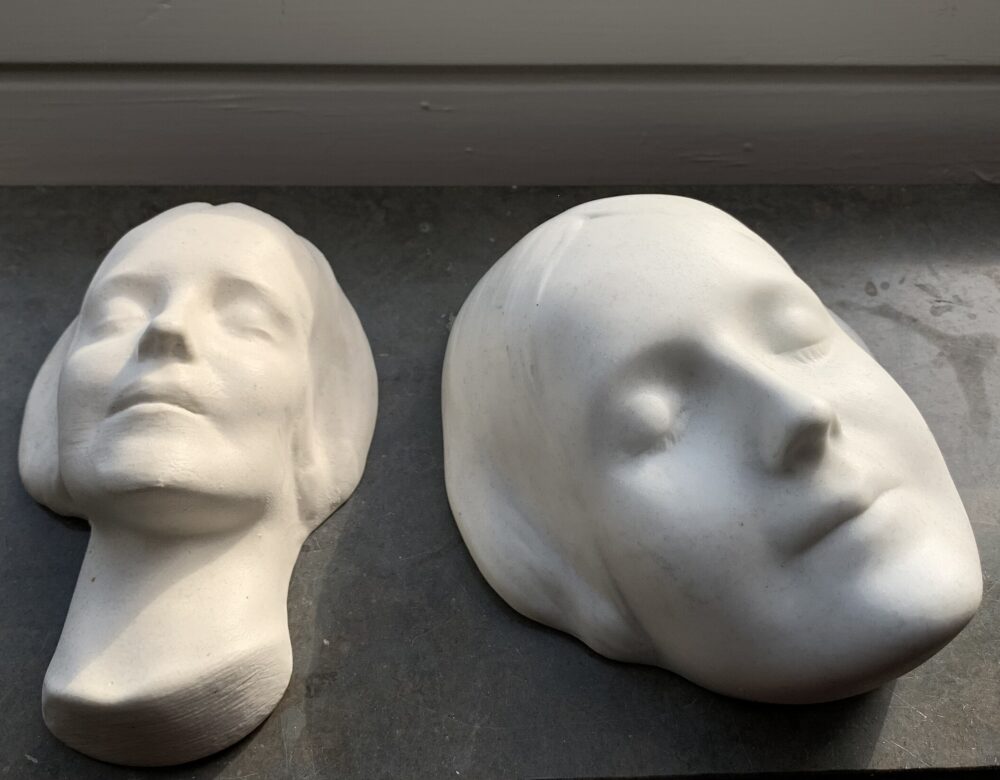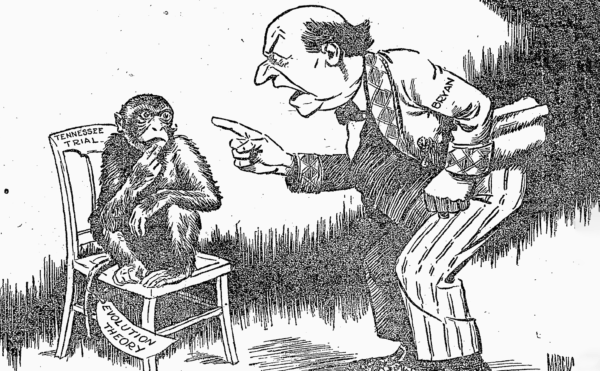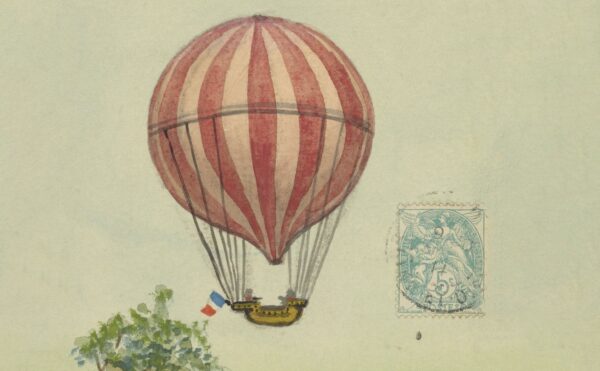If you’ve ever taken a CPR class or heard the song “Smooth Criminal,” you’re familiar with the Mona Lisa of the Seine. But the CPR “dummy” that’s saved millions of lives around the planet is not just an artist’s creative rendering. It’s based on a real woman who drowned in the Seine River in Paris in the 1800s. Her exploitation became part of an effort against the paternalistic practice of medicine, but maybe not in the way you would think.
About The Disappearing Spoon
Hosted by New York Times best-selling author Sam Kean, The Disappearing Spoon tells little-known stories from our scientific past—from the shocking way the smallpox vaccine was transported around the world to why we don’t have a birth control pill for men. These topsy-turvy science tales, some of which have never made it into history books, are surprisingly powerful and insightful.
Credits
Host: Sam Kean
Senior Producer: Mariel Carr
Producer: Rigoberto Hernandez
Associate Producer: Sarah Kaplan
Audio Engineer: Rowhome Productions
Transcript
She goes by many names. Ophelia. The Mona Lisa of the Seine. The Most Kissed Woman in the World. Or most often, simply the Unknown Woman.
So who is this Mona Lisa? She’s the model for the mannequins that train people on CPR. If you’ve ever taken CPR training, you’ve almost certainly gazed down upon her face, or touched your lips to hers.
Now, you might have thought she was just a generic woman. No one in particular. But no—she’s someone. Her likeness has traveled the globe. She’s inspired artists from Pablo Picasso to Michael Jackson. She’s one of the most famous faces in the world. And we have no idea who she is.
The citizens of Paris had a morbid pastime in the late 1800s. It involved the dead bodies that, sadly, were often found in the Seine River. Some had committed suicide. Others were the victims of crimes or had accidentally drowned.
And if no one showed up to claim the body, the person went on display. The morgue had twelve black marble slabs. They sat behind a giant window, and workers would lay the bodies out. They did so in the hope that someone passing by could identify the deceased.
But many people took a ghoulish pleasure in this activity. They’d stroll by day after day just to gawk. Even tourists would come by. It was the busiest window in Paris, people just gazing at the dead.
One day, a pathologist at the morgue was preparing the body of a young woman recently found in the river. It wasn’t clear whether she had drowned or had been dumped there.
But something about the woman captivated the pathologist. She had the most beautiful face he’d ever seen. It’s kind of creepy, but he pretty much fell in love with her. So he took an unusual step: he called in a modeler, an artist who made so-called death masks.
Death masks were quite common before photography became widespread. After someone died, the modeler would spread plaster over their face to capture a likeness. Many famous people had death masks made—Dante, Beethoven, Napoleon, Chopin. Regular people also made them when a loved one died, as a keepsake.
Now, they didn’t usually happen at the morgue. But the pathologist paid for it, and the modeler made one.
The mask showed a young woman, probably a teenager. She had full, round cheeks and smooth skin. Her eyelashes looked like they’re still wet. Her hair is pulled back and parted down the center. And she’s got an enigmatic smile—subtle, with a touch of sadness.
The pathologist presumably took the mask home. And the story might have ended there. Except, the modeler also put the mask up in his shop. Not for any reason. He had lots of masks on display, to show off his handiwork.
But people who visited the shop began noticing the young woman. Like the pathologist, her face spoke to them somehow. Even stranger, people asked to buy copies of the mask—of this unknown woman.
And over time, her mask became trendy. Especially among artists and writers. Picasso, Rilke, Nabokov, and others, they all hung her face up in their rooms to gaze at her. They called her a muse.
And the fact that no one knew her story didn’t stop people from inventing one. Rumors spread that she was a Hungarian singer. Or an Argentinian nightclub performer. Or a Russian dancer, or a British orphan. And in these stories, something sinister usually happened to her. She’d eloped and been abandoned. Or been seduced and killed. Or blackmailed and driven to suicide. That’s when people started calling her a latter-day Mona Lisa, or the Ophelia of the Seine.
But then how did she become the face of CPR? For that, we’ll have to jump forward in time, to Nazi Germany in the 1930s.
Peter Safar was a pre-medical student then in Austria. He was also Jewish, which was obviously dangerous in the Third Reich. Thankfully, a kindly clerk altered his official papers when he applied to medical school and covered up his ancestry. After that, he was safe.
But being saved only introduced another problem. On paper, Safar looked like a full-blooded Aryan, which meant that he got drafted into the Hitler Youth—not where a Jew wanted to spend his time.
Lucky for him, he caught a rash. This allowed him to evade duty temporarily. And during that leave, he had an inspiration.
From his medical studies, Safar knew of an ointment that doctors used to test patients for tuberculosis. It was pretty harsh. You were only supposed to dab a tiny amount on someone’s skin. Otherwise, it caused a nasty reaction—sometimes a fatal reaction.
So Safar got hold of this ointment and slathered it all over his body. Sure enough, he had a ghastly reaction—practically a biblical plague on his skin.
But it did the trick. The Nazis were obsessed with purity and health. So the Hitler Youth officials took one disgusted look at Safar and banned him from the organization.
Safar laid low during World War II. He then left Austria for the United States. He trained in anesthesiology, then ended up at Johns Hopkins University in Baltimore.
His interest in anesthesiology soon got him thinking about a related topic: how to revive people who’d suffered accidents or emergencies and fallen unconscious. So he started running some experiments—experiments that he later admitted would never be allowed under modern medical guidelines.
In short, he put some volunteers under with anesthesia. Then he injected a compound called curare. Curare is one of the deadliest poisons in the world. It kills by paralyzing muscles—including the diaphragm, the muscle that controls breathing.
Curare comes from the sap of certain trees in the Amazon jungle. Indigenous people there hunted with it. Just a tiny amount smeared on an arrow would kill any animal. And this is what Safar decided to give his volunteers.
During the experiment, they were hooked up to instruments that monitored their air intake. Given that the curare had stopped their breathing, the level of oxygen dropped dangerously low. So Safar started moving their limp bodies around. He would try different positions and blow air into their mouths. He was trying to determine the best posture to get air inside their lungs.
It was risky work—dancing around death. If he had tried out some position where oxygen couldn’t reach their lungs, the volunteers easily could have suffered brain damage or died.
But, in Safar’s skilled hands, they did not. And he eventually determined the best way to get air into people lungs: tilt the head back, thrust the jaw forward, and blow into their mouths. Nowadays, we call this mouth-to-mouth resuscitation. Along with chest compressions, it’s the basis of CPR. And it was Peter Safar who developed this procedure.
Now, Safar wanted to spread this practice to doctors and nurses around the world. So he published a paper and started speaking at conferences.
Doctors were intrigued. But they also had some objections – mostly about how to practice CPR.
Again, CPR involves chest compressions. And it’s a little-known fact that chest compressions can easily break bones. In fact, 30 percent of people who receive CPR end up with broken ribs or a broken sternum.
That’s obviously less bad than dying. But it’s not pretty. And when Safar suggested training medical personnel on CPR, the audience immediately raised this objection. You can’t hold training sessions if 30 percent of the participants will suffer broken ribs.
So that was the dilemma. Doctors and nurses needed to practice CPR. But they couldn’t practice without injuring each other. It was a catch-22.
But Safar soon caught a break. After one of his CPR talks, an audience member raised his hand. He was a Norwegian anesthesiologist. And he said, I think you should talk to my countryman, Åsmund Laerdal.
Now, Åsmund Laerdal was not the most obvious person to solve this problem. He made toys for a living.
Laerdal had started making picture books and calendars years earlier. Then he moved on to wooden cars. But after World War II, he began experimenting with plastics. In particular, he made a plastic doll. She had eyes that closed and very realistic hair. Laerdal’s company called her Anne. Anne wasn’t quite Barbie-famous, but she was pretty popular in Europe.
Now, the anesthesiologist at Safar’s talk happened to know Laerdal. So, with Safar’s blessing, he approached the toymaker with an idea: to make a life-sized plastic doll so people could practice CPR. No ribs to break there.
It turned out that Laerdal was quite receptive to the idea. In part because of a recent experience. Not long before, he’d strolled outside one afternoon looking for his two-year-old son Tore. He found him in the backyard pool. Floating face-down.
When Åsmund Laerdal saw his tiny son floating face-down in the pool, he sprinted over and dove in. After pulling his son out, he started squeezing the boy. He had no idea what he was doing, but he was desperate to save Tore’s life.
And frankly, Laerdal got lucky. He succeeded in expelling the water from Tore’s lungs. The boy sputtered and eventually came around.
Still, the moment spooked Laerdal. He knew how lucky he’d been. So when the Norwegian anesthesiologist approached him about making a doll for CPR training, Laerdal jumped at the chance.
He decided to use a plastic called polyvinyl chloride. It’s easy to mold, and it has a stiffness similar to the human ribcage.
The big question involved the face. How realistic should it be?
Now, Laerdal could have fashioned something simple—just circles for eyes and a crude hole for a mouth. But his intuition told him no. Something realistic would be better. He wanted people to see a real face during CPR training. Even if seeing that face made them feel uncomfortable.
After all, resuscitating someone is uncomfortable. It’s stressful. You’re dealing with a medical emergency. And Laerdal wanted people to experience this stress during training. That way, they’d be better prepared during a crisis.
Psychologically, there’s also memory to consider. CPR training doesn’t do any good if people forget it afterward. But emotions actually help our brains remember things. So stirring up emotions during training would help that training stick in people’s minds.
For those reasons, Laerdal wanted a realistic face on his CPR dummy. He considered a male face at first, a sort of Ken doll everyman. But he dismissed that idea. This was the 1950s, and he feared that most men back then would be too macho to put their lips on another man, even a dummy.
Women, he figured, would be more mature about things. So overall, he decided a woman’s face would be better. But whose face would it be?
That’s when he remembered the mask. His wife’s family had an old death mask hanging in their home. It was the Unknown Woman from Paris, the Ophelia of the Seine.
It’s not clear if Laerdal knew the morbid backstory of the mask. But the face had struck him as elegant. So he decided to use her as the model for his CPR mannequin. For the mannequin’s name, he drew on his famous Anne doll. He called her Rescue Annie.
Laerdal made a prototype of Rescue Annie and showed it to Peter Safar. Safar was thrilled—she was the perfect training tool. She debuted in 1959, and Safar immediately started encouraging doctors, nurses, and EMTs to purchase Annie dolls and train with them.
Then something happened that changed Safar’s approach. In 1966, he flew off to speak at yet another conference. And while he was gone, his 11-year-old daughter suffered a severe asthma attack. So severe she died.
Her death gutted Safar. If only he’d been at home, he could have saved her.
But as he emerged from his grief, he realized something. Other people had been around his daughter when she died. What if they’d had CPR training? They could have saved her life.
This led Safar to propose something kind of radical. Medicine was very paternalistic then. Doctors always knew best, and they controlled medical knowledge tightly.
But Safar realized that you don’t need fancy medical training to perform CPR. Anyone could do it. So why not spread CPR as widely as possible? To offices, to schools, everywhere.
So that’s what Safar did. He stopped focusing on medical professionals and started organizing training sessions for regular Joes and Janes.
People loved the idea. As a result, these sessions grew more and more popular every year. They’ve since spread across the globe. By some estimates, a billion people worldwide have now received CPR training. And the far majority of them trained on Rescue Annie, the Unknown Woman from the Seine.
And just like the early 1900s, her face continued to inspire artists. One part of CPR training involves gently shaking the mannequin, as if to rouse the victim. And for a long time, people in CPR training were taught to ask, “Annie, are you okay? Are you okay, Annie? Annie, are you okay? Are you okay, Annie?”
Which might sound familiar…
It’s a line in the Michael Jackson song “Smooth Criminal.” Jackson took CPR training once, and for whatever reason, that face and that line—“Annie, are you okay?”—inspired one of his most famous songs.
Peter Safar’s CPR regimen has saved millions of lives around the world. For this work, he got nominated three times for the Nobel Prize in medicine. But he never won. Probably because scientists normally reserve Nobel Prizes for breakthroughs in genetics or biochemistry— big, headline-generating stuff.
But Safar’s simple CPR steps have probably saved more lives than any other Nobel winner’s work has. Later in his career, Safar also founded the world’s first intensive care unit. The guy was a life-saving machine.
As for toymaker Åsmund Laerdal, he continued to manufacture Rescue Annie dolls. He also became a patron of medical research. And toward the end of his life, Laerdal turned his company over to Tore—the son who he’d saved from drowning years before, and who was eager to keep saving lives in the future.
In Paris today, you can still visit a shop owned by the descendants of the artist who made the initial mask of the young drowned woman. There are other masks hanging on the wall there—famous people like Beethoven and Dante and Napoleon. But the Unknown Woman continues to outsell them all, year after year.
In the century since her death, scholars have scoured Paris police archives and morgue records for any clue about who she was. History students have written entire dissertations on her. But her identity remains a mystery.
Still, we no longer have to call her the Unknown Woman. She is somebody now. If Helen of Troy was the face that launched a thousand ships, then this young woman and her sad, soft smile should be known as the face that saved millions of lives and continues to save more today.




